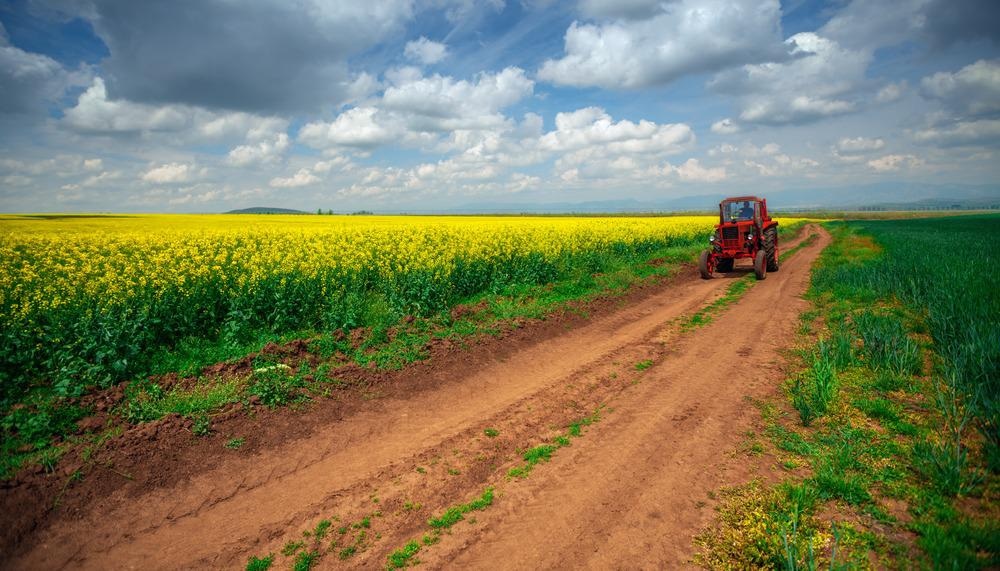The Earth has lost a third of its arable farming land over the last 40 years due to erosion, climate change, and pollution. In the last 150 years, it has lost half of its topsoil, which has a major impact on the quality and quantity of crops that can be produced on arable land.

Image Credit: Valentin Valkov/Shutterstock.com
This loss of soil and land will be catastrophic without a drastic change to current agricultural practices. By 2050, the global population will have swelled by another two billion. The world’s rapidly increasing population growth, alongside continued urbanization and changing diets is leading to increasing demand for food - a resource that is already becoming stretched.
By 2050, farmers will have had to double their crop production to accommodate the world’s growing needs. However, increasingly degraded farmland is threatening the capacity of the world’s agriculture sector to achieve this goal.
Scientists are beginning to work with communities to transform degraded farmland with water conservation solutions and soil conservation projects that are preventing erosion, protecting topsoils, and securing the world’s future food source. Here, we discuss how one farmland conservation project, Africa Wood Grow, is making an impact across four locations in Kenya. The project is paving the way for future projects that will be vital to reviving degraded farmland and providing a sustainable solution to food security in Africa.
The Africa Wood Grow Initiative to Re-Green Kenya’s Farmland
Africa Wood Grow began in 2010 to re-green degraded farmland, prevent erosion, protect topsoils, and support the livelihoods of farmers. The initiative is much more than a soil conservation project or a water conservation project. It works with the community to increase food security in the region and improve the health and nutrition of local people via the proper use of soils and water.
The project began with just one farm and now has 61 farmers involved in the project across Kenya. Many more have signed up to the waiting list, and the creators of Africa Wood Grow plan to scale their activities to enable more communities to benefit.
Africa Wood Grow improves soil and water conservation and management in the farms involved in the project by teaching farmers techniques in storage, recharge, and reuse. They educate local farmers on how to use sources that are easily available to them, making their processes sustainable, and help them to develop new technologies for the sustainable use and management of their land, securing the health of their resources for years to come. They empower communities to improve their quality of life by ensuring they have a source of steady income, and reliable, nutritious, and sufficient crop yield.
10 Years Africa Wood Grow
Video Credit: Africa Wood Grow/YouTube.com
Leveraging IoT in Soil and Water Conservation Projects
Recent figures have revealed that there are now more connected devices in the world than there are people. Our growing thirst for technology has helped to grow this ecosystem of devices, connected via the internet, that is now giving rise to new possibilities in a wide range of industries. As the world becomes ever more connected, with the number of connected devices continuing to rise, the capabilities of the Internet of Things (IoT) will develop further, and early adopters are those who will benefit most.
The agricultural industry is one such early adopter that has leveraged IoT technology into what has become known as Agriculture 4.0, the fourth agricultural revolution. This is being propelled by the digital age.
The ‘smart farming’ trend is gaining popularity, and the technology it uses is developing further. Smart farming uses sensors connected to the internet to collect real-time data on factors such as soil moisture levels, air temperature, sunlight, and air pollution. Many sensors have been developed to monitor soil conditions and automatically trigger actions that make adjustments to keep these conditions optimal. Such systems reduce water wastage and prevent soil erosion.
As the cost of sensor technology continues to fall, smart farming technology will become more accessible to farms across the globe. It is likely that these digital solutions will be incorporated into farmland conservation projects, such as Africa Wood Grow, to enhance their success at re-greening degraded farmland and establishing sustainable farming practices for the future. This will help to not only protect arable farmland but also enhance the quality, quantity, and reliability of crop yields.
Before we can achieve such an outcome, more projects focused on assisting farmers at the community level are needed, which will likely require additional funding. Given the growing urgency of the looming food crisis, it is probable that funding for such projects will become a focus of global government initiatives.
References and Further Reading
About Africa Wood Grow. [Online]. Africa Wood Grow. Available at: https://www.africawoodgrow.com/about/
Africa Wood Grow preventing erosion on Kenyan farms. [Online]. Food and Agriculture Organization of the United Nations. Available at: https://implementers.decadeonrestoration.org/implementers/44/africa-wood-grow
Jonathan Foley. Where will we find enough food for 9 billion? [Online]. National Geographic. Available at: https://www.nationalgeographic.com/foodfeatures/feeding-9-billion/
Yang, Y. et al., 2020. Restoring abandoned farmland to mitigate climate change on a full Earth. One Earth, 3(2), pp.176–186. https://www.sciencedirect.com/science/article/pii/S2590332220303638
Disclaimer: The views expressed here are those of the author expressed in their private capacity and do not necessarily represent the views of AZoM.com Limited T/A AZoNetwork the owner and operator of this website. This disclaimer forms part of the Terms and conditions of use of this website.